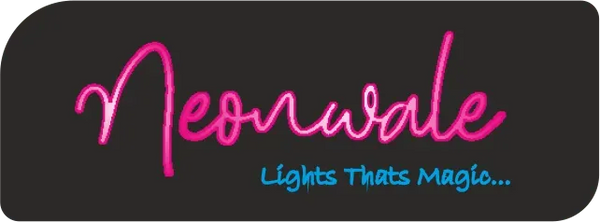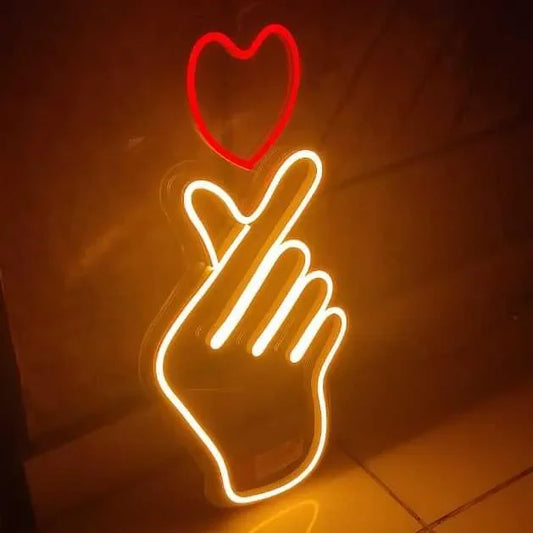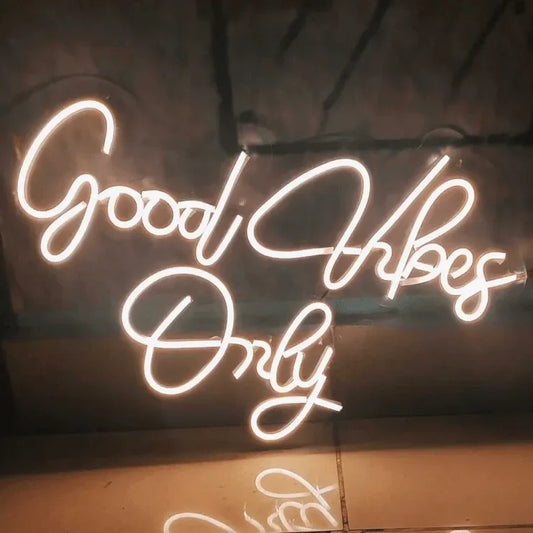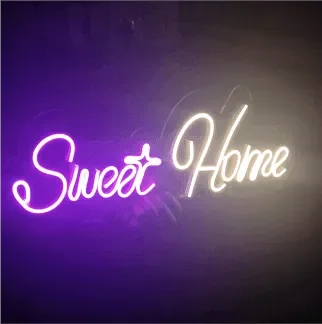
Glass Tubes to LED Magic: The Complete Evolution of Neon Signs
Introduction: The Glow That Never Faded

Neon is more than light. It’s nostalgia, art, and identity — all glowing in one frame.
From vintage gas tubes in 1920s Paris to today’s sustainable LED neons, this art form has evolved faster than ever imagined.
Today, brands, designers, and creators across India trust Neonwale to craft their stories in light — combining modern tech with timeless artistry.
The Birth of Real Neon
The story begins in 1910, when Georges Claude displayed the first true neon lamp at the Paris Motor Show.
He used neon gas in glass tubes to create a warm, mesmerizing red glow.
By the 1920s, neon had become the heart of street life — lighting up cafés, theatres, and city squares.
These early neon signs weren’t just advertisements. They were landmarks.
Think of the glowing boulevards of Paris or the buzzing signs of early Hollywood — all shaped by hand-blown glass tubes.

The Golden Era of Neon
Between the 1930s and 1960s, neon defined urban art.
Every diner, casino, and movie theatre wanted a sign that screamed personality.
Cities like Las Vegas, New York, and Tokyo turned into global galleries of light.
But the beauty came at a cost — gas-based neons were fragile, expensive, and high-maintenance.
Each tube had to be shaped by hand and refilled if damaged.
By the late 1980s, the world started moving toward cheaper and safer alternatives.
The Fall of Traditional Neon
With rising costs and new safety rules, traditional neon slowly dimmed.
The tubes were made of glass, filled with gases like neon or argon, and required high-voltage transformers.
This meant energy loss and frequent repairs.
Yet, designers missed the glow — that iconic, emotional feel.
So innovation took over.
The Rise of LED Neon: Art Meets Efficiency
Enter the era of LED Neon Flex — a flexible, durable, and energy-efficient alternative that changed everything.
LED neons use silicone or PVC tubing instead of glass.
They consume 80% less power and last far longer.
They’re safe for homes, offices, and outdoor use — without heat or toxic gases.
For Neonwale, this was the moment to redefine an entire industry.
By combining traditional design values with cutting-edge LED technology, the brand made neons smarter, cleaner, and more expressive.

How Neonwale Perfected the Modern Neon
Neonwale didn’t just follow the global LED trend — it set new standards for India’s neon industry.
Here’s how:
-
Precision Crafting: Every sign is designed with advanced cutting and heat-forming tools for perfect line consistency.
-
True-to-Tone Colors: Custom LEDs ensure color accuracy that matches your digital design exactly.
-
Safe Materials: Neonwale uses RoHS-compliant materials — meaning no mercury, no harmful emissions.
-
Custom Everything: From fonts to shapes, logos to wedding names, everything is built to order.
Whether it’s a minimalist brand wall or a dreamy bedroom quote, Neonwale delivers both art and technology — in one clean glow.
Neon in Design and Culture
Modern neon is no longer limited to businesses.
It’s a lifestyle element.
From architects to influencers, everyone uses neons for visual storytelling.
Design magazines like Architectural Digest India and Dezeen often feature projects where LED neons blend seamlessly with architecture.
They bring character without clutter — lighting walls, arches, and even furniture.
Neonwale’s design experts collaborate with creators to achieve the perfect look — one that balances luxury and personal expression.
The Technology Behind the Glow
LED neon flex works through surface-mounted diodes inside a flexible casing.
The light distribution is even, giving the illusion of a solid tube of light — just like classic neon.
The result?
-
Long lifespan (50,000+ hours)
-
Low heat emission
-
Color stability over years
Neonwale’s innovation team keeps experimenting with smart integrations too — like dimmers, color controllers, and app-based lighting.
Sustainability: The Brighter Side of the Future
The new neon isn’t just beautiful — it’s responsible.
Energy-efficient LEDs reduce carbon footprint.
Durable materials mean fewer replacements.
Even packaging is now recyclable at Neonwale.
That’s why the eco-conscious design community has embraced LED neon as part of green architecture and sustainable décor.
Why Neonwale Leads the Glow Revolution
-
India’s trusted name in custom neon craftsmanship
-
Largest color palette and font library in the market
-
Pan-India service and global shipping
-
Dedicated design support for architects, brands, and individuals
-
A brand featured in trend articles and influencer spaces across India
When it comes to trust, performance, and aesthetics — Neonwale isn’t just a supplier; it’s the storyteller of light.
Conclusion: The Future Glows Bright
From gas to LED, from art to innovation — the neon journey mirrors our creative evolution.
Today’s neon is safer, smarter, and more meaningful.
And through it all, Neonwale continues to lead — combining craftsmanship with consciousness, creating signs that last and memories that shine.
“The world may change its light, but the glow of Neonwale remains timeless.”




